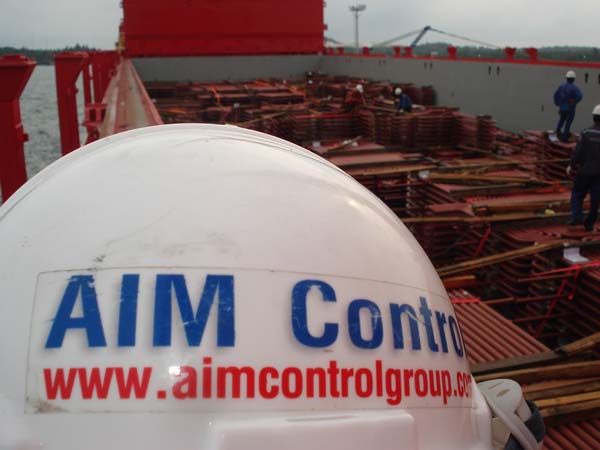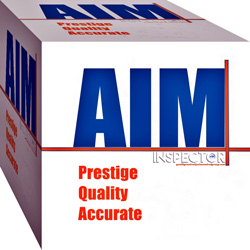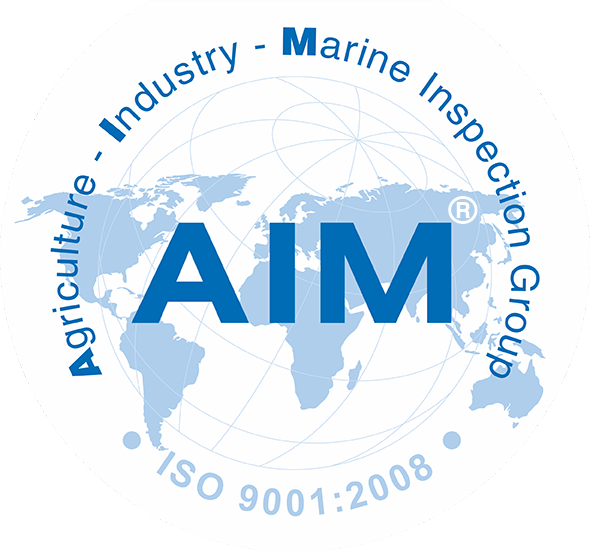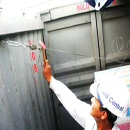Load securing inspection of cargo
Load securing inspection of cargo & approval servcies
The load securing inspection of cargo is to monitor the practice of stabilizing and securing cargo so that it remains stationary during transport in safety and approval.
AIM Control offers a job of load securing inspection of cargo doing for several reasons but especially to prevent the cargo from being damaged, risked.
The practice is common in all facets of the cargo and transportation industries and can take many forms depending on the types of carrier and the types of cargo being transported. Email

Four main types of transportation are used around the world to haul cargo. cargo planes, trucks, trains and ships are the primary means by which most cargo is transported. Some methods of inspection of load securing are specific to each type of transport, but some are common to all of them.
Simple tie-downs are the most primitive and still one of the most common types of Inspection of load securing for smaller cargo loads. Ropes, high-strength straps, and cables are used to hold the load in place with the ends tied to grommets, eye-holes, or any available part of the cargo. This simple load securing of cargo types have been used to move cargo for thousands of years, on horses, camels, and archaic vehicles, like wagons and sailing ships.
In modern times, many specialized techniques have been developed. Boxes arranged on pallets in such a way that the palletized loads form regular shapes are called unitized loads. The load and the pallet are then tightly wrapped in plastic, stabilizing the individual boxes and securing them to the pallet itself. These unitized loads are sometimes further stabilized by strapping them.
The checklist in loading secure survey of cargo procedure is the come-along. This is to supervise a type of ratcheting fastener that gradually tightens a strap until it is much tighter than could be achieved by simply pulling on the strap by hand. The strap may or may not be attached to securing points on carriers, as these types of straps are sometimes used to stabilize small loads on pallets as well. Some types of come-alongs may also be used on chains or cables.
Large cargo loads may be secured by a number of other means. Blocking is a technique by which wooden blocks are nailed or bolted to the cargo vehicle to stabilize a load. Dunnage is the practice of surrounding cargo with other items such as wood or waste materials to fill any spaces between the various loads and the vehicle, stabilizing the cargo. Dunnage bags are a relatively recent invention that were first used in the 1960s and are essentially balloons of durable material placed around cargo and then inflated, immobilizing the load.
Modern cargo containers and their transport have resulted in the development of an entire system of cargo load securing devoted to these cargo carriers, which have become the standard for international shipping, particularly across the oceans. The containers lock together and to the deck of the ship with special locking fasteners installed on each container and the ship. These are often automatic, so the simple act of stacking the containers with a crane will lock them together.

Loading Master and Port Captain
A loading master of AIM Control Inspection Group is a person who coordinates all activities related to the loading, transfer and discharge of marine cargo. They carry much responsibility in ensuring that cargoes are correctly and efficiently placed where they should be, according to safety standards. They also ensure that the cargo is unloaded and discharged properly and in a timely fashion. In addition, the loading master handles all paperwork and coordinates with all parties involved in the cargo shipment. They make sure that they communicate as needed with clients, especially regarding the progress of the marine operations.
In order to carry out this function, a loading master of AIM Control Inspection Group must have expert knowledge about vessel operations, as well as the associated shore operations. A loading master's job also requires a thorough understanding of laws and regulations related to safety, maritime security, and environmental protection. They can be responsible for overseeing the movement of petroleum products, which is a delicate operation that requires the utmost competence and skill. When involved in this kind of operation, they are called a loading master person-in-charge or PIC.
The PIC of AIM Control Inspection Group does not only supervise the loading or unloading of products to and from the ground when a maritime vessel is berthed at the dock. They also take charge of transfers between barges and tanker ships. In all these tasks, they see to the safety and security of both the cargo and all persons involved in its transfer or handling. They also take on the heavy responsibility of ensuring that the marine transfer operations do not result in any environmental damage or pollution. Water pollution can easily result from spills or a breach in security when unauthorized people gain access. Thus, ensuring that these do not happen is one of the most important of the loading master’s duties.
Other loading master of AIM Control Inspection Group duties involve timely and clear communication with the person-in-charge of the vessel, and safe ground operations during the unloading of cargo. The PIC sees to it that vessel and dock headers are lined up properly; the gangway is secure, the dock crane is positioned and operating correctly, and the transfer hose, loading arm and similar mechanisms are all in their proper placement and functioning capacity. In addition, the PIC also ensures that there are hourly logs and regular monitoring of all cargo transfer operations.

The loading master of AIM Control Inspection Group should be a good communicator. During a loading operation, they are in continuous communication via two-way radio with the person-in-charge in the vessel, who may be a Tankerman-PIC or a deck officer. At any time that there is a problem in the transfer operation, such as a leak in the transfer hose, they can stop the operation immediately and do remedial action. But prior to the actual loading operations, they also confer with stakeholders such as the vessel PIC and the marine surveyor or inspector. They plan ahead and agree on details such as rate flows during the transfer, transfer procedures, and projected completion times. A loading master's job is challenging; with it comes great responsibility. Only a person with the requisite skills and knowledge can perform it as it should be done.
Inspection of weight lift hook
Inspection of weight lift of crane hook is to monitor the capabilities of this device raise / lower in compare with the weight of goods to limit how much and supervise the lifting / lowering goods in the course of / unload file appropriate to avoid overload problem
Lift manager & supervision
A lift manager of AIM Control Inspection Group coordinates the transport of large and heavy materials. Typically, they control the logistics of moving oversize machinery and other big items by ground, air and sea. Responsibilities include measuring and coordinating cargo and communicating with lift workers and supervisors to ensure safety and efficiency.
Lift managers of AIM Control Inspection Group perform a variety of duties related to transporting large cargo. The cargo load is carefully weighed and measured by the manager to determine the available transportation options. Supervision of the loading and unloading process may also be the responsibility of a lift manager. Many managers work directly with safety supervisors and inspectors to reduce the incidence of accident and injury.
Understanding the abilities and limitations of transport equipment is an important requirement for lift managers. Choosing the wrong crane or insufficiently strong straps can have catastrophic and expensive results when moving large items. Many in this position schedule pickup vehicles like trains, trucks and planes from privately contracted companies. It is generally the lift manager's job to find a suitable solution when issues arise with any of the machinery or parties involved in the transport operation.
Why do you need AIM Control's load securing inspection of cargo?
Even an adapted packaging has a limit of shocks and vibrations it can withstand during transportation before it collapses and that is the point when it comes to inspection of load securing. inspection of Inspection of Load securing protects the products, protects the environment and people, and generates a cost reduction and finally supports the company image.
All these points are explained in detail below:
Product protection: If the cargo is inspected of secure against rolling, tipping and shifting it will absorb smaller amounts of shocks and vibrations which minimizes risks of packaging deterioration and gives a better protection to the packed goods.
Peoples’ protection : inspection of Inspection of Load securing helps to protect employees, people in traffic and all the people who could be the victim of accidents caused by poor load securing.
Environmental protection: In some cases dangerous liquids and other substances can leak out of broken packaging that was not correctly secured, and cause environmental pollution and threaten people’s health. inspection of Inspection of Load securing also contributes to safety on the roads. For example heavy bulky goods can create so much pressure on container doors that when opened the packages fall out on the road creating dangerous traffic situations.
Cost reduction: By using inspection of Inspection of Load securing it is possible to have a cost reduction in several ways:
-
No damage to the products eliminates expenses to replace them.
-
It is much easier to handle well stacked products and that reduces the time needed for unloading of containers saving on man-hours needed.
-
By eliminating potential environmental and health risks it is possible to avoid unexpected expenses on removing the caused damages, etc...
-
Approval of certification for load securing inspection of cargo.
Company image: All the end customers prefer to get their ordered products in good conditions without damage and perfectly stacked to save their own costs on handling. That is why it is possible to contribute to company’s image by using inspection of load securing. And no company wants to get negative commercial because of accidents caused by their products.
Please kindly review the Inspection Survey Services of AIM Control Inspection Group

Also kindly review the Heavy Lift Cargo Inspection of Lashing, loading & securing of AIM Control Inspection Group







